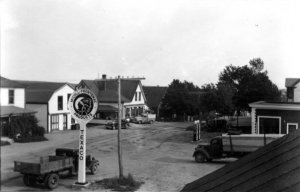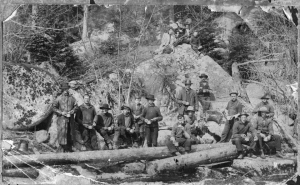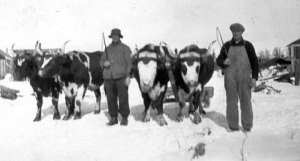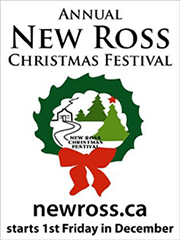History
 New Ross is a village located in the heart of Nova Scotia, and is home to the Ross Farm Museum. The village was originally settled in 1816 by Captain William Ross. Captian Ross was from County Cork, Ireland. During the War of 1812, as a soldier in the 16th Regiment, he and his family moved to British North America and were stationed at Fort Coteau-du-Lac, Quebec. Lieutenant William Ross then chose to transfer to the Nova Scotia Fencible Infantry and became a Captain.
New Ross is a village located in the heart of Nova Scotia, and is home to the Ross Farm Museum. The village was originally settled in 1816 by Captain William Ross. Captian Ross was from County Cork, Ireland. During the War of 1812, as a soldier in the 16th Regiment, he and his family moved to British North America and were stationed at Fort Coteau-du-Lac, Quebec. Lieutenant William Ross then chose to transfer to the Nova Scotia Fencible Infantry and became a Captain.
The Fencibles were disbanded on July 26, 1816 and two weeks later, on August 7, 1816, William Ross, along with his wife and family, led 172 former soldiers to the village of Sherbrooke (renamed New Ross). The soldiers were given land grants along the newly burned road between Chester and Kentville as part of the government’s effort to settle the interior of the colony. Captain Ross built a small log house overlooking Lake Lawson and the following year he built a frame house which he named Rosebank. Six years later on May 2, 1822, William Ross died suddenly at the age of 39. Generation after generation of the Ross family continued to live in the house until 1969 when the Ross Farm Museum was established.
 In the early days barrel and lumber production were important economic activities in the area. The Gold River was known for its gold deposits in the late1800’s. From the late 1800’s to about 1950 manganese mines in the Mill Road area created employment. Because of its large number of lakes and rivers, New Ross boasted about 50 mills as sources of power in the 1880’s. Since the early 1900’s the forestry industry has been the main employer in the area.
In the early days barrel and lumber production were important economic activities in the area. The Gold River was known for its gold deposits in the late1800’s. From the late 1800’s to about 1950 manganese mines in the Mill Road area created employment. Because of its large number of lakes and rivers, New Ross boasted about 50 mills as sources of power in the 1880’s. Since the early 1900’s the forestry industry has been the main employer in the area.
New Ross and district is made up of several smaller areas. The main village area is sometimes referred to as “Charing Cross” but more often just “The Cross”. The other areas include: Seffernville, Harriston, Aaldersville, The Forties Settlement, Mill Road, Leville, New Russell, Lake Ramsay and Fraxville. In the past each little village had its own one room school but in 1960 all of these schools were replaced with the New Ross Consolidated School (now grades P-8).
 For more information, enquiries or just for a quick look at some great pictures, check out the Ross Farm Museum website or the New Ross Historical Society and New Ross-Old Photos on facebook.
For more information, enquiries or just for a quick look at some great pictures, check out the Ross Farm Museum website or the New Ross Historical Society and New Ross-Old Photos on facebook.






